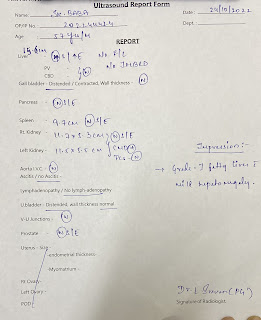50yr old female came for dialysis

PERSONAL HISTORY:
SHE WAS A DAILY WAGE WORKER WHO STOPPED GOING TO WORK SINCE 1 YEAR BECAUSE SHE WAS FEELING VERY WEAK.
SLEEP IS INADEQUATE
DIET IS MIXED
APPETITE-DECREASED
DECREASED URINE OUTPUT SINCE 1 MONTH
BOWEL FUNCTIONS ARE NORMAL
FAMILY HISTORY:
NOT SIGNIFICANT
MENSTRUAL HISTORY:
NULLIPAROUS
AGE OF MARRIAGE: 15 YEARS
Hydronephrosis in patients with cervical cancer: an assessment of morbidity and survival
Krishna Patel, Nathan R. Foster, [...], and Aminah Jatoi
Purpose
Hydronephrosis is a frequently observed but understudied complication in patients with cervical cancer. To better characterize hydronephrosis in cervical cancer patients, the current study sought (1) to describe hydronephrosis-associated morbidity and (2) to analyze the prognostic effect of hydronephrosis in patients with a broad range of cancer stages over time.
Results
Two hundred seventy-nine cervical cancer patients with a median age of 49 years and a range of cancer stages were included. Sixty-five patients (23 %) were diagnosed with hydronephrosis at some point during their disease course. In univariate analyses, hydronephrosis was associated with advanced cancer stage (p<0.0001), squamous histology (p=0.0079), and nonsurgical cancer treatment (p=0.0039). In multivariate analyses, stage and tumor histology were associated with hydronephrosis. All but one patient underwent stent placement or urinary diversion; hydronephrosis-related morbidity included pain, urinary tract infections, nausea and vomiting, renal failure, and urinary tract bleeding. In landmark univariate survival analyses, hydronephrosis was associated with worse survival at all time points. In landmark multivariate analyses (adjusted for patient age, stage, cancer treatment, and tumor histology), hydronephrosis was associated with a trend toward worse survival over time (hazard ratios ranged from 1.47 to 4.69).
Conclusion
Hydronephrosis in cervical cancer patients is associated with notable morbidity. It is also associated with trends toward worse survival—even if it occurs after the original cancer diagnosis.
Hydronephrosis develops when a blockage in the renal collecting system leads to distention of the renal calyces. Women with cervical cancer often develop this complication as a result of tumor or lymph node encroachment, inflammation, or scarring at the pelvic rim. In an effort to relieve obstructive symptoms, patients can undergo stent placement or urinary diversion procedures [1–8]. In addition, cervical cancer is often treated with nephrotoxic drugs, which are sometimes dose-modified or omitted when hydronephrosis is associated with renal insufficiency [8]. Such dose changes can compromise cancer treatment and potentially lead to compromised clinical outcomes, thus emphasizing the importance of studying hydronephrosis in patients with cervical cancer. Furthermore, this complication has been associated with pain related to inflammation of the and surrounding structures.
Hydronephrosis develops when a blockage in the renal collecting system leads to distention of the renal calyces. Women with cervical cancer often develop this complication as a result of tumor or lymph node encroachment, inflammation, or scarring at the pelvic rim. In an effort to relieve obstructive symptoms, patients can under.go stent placement or urinary diversion procedures [1–8]. In addition, cervical cancer is often treated with nephrotoxic drugs, which are sometimes dose-modified or omitted when hydronephrosis is associated with renal insufficiency [8]. Such dose changes can compromise cancer treatment and potentially lead to compromised clinical outcomes, thus emphasizing the importance of studying hydronephrosis in patients with cervical cancer. Furthermore, this complication has been associated with pain related to inflammation of the kidney and surrounding structures.
Hydronephrosis develops when a blockage in the renal collecting system leads to distention of the renal calyces. Women with cervical cancer often develop this complication as a result of tumor or lymph node encroachment, inflammation, or scarring at the pelvic rim. In an effort to relieve obstructive symptoms, patients can undergo stent placement or urinary diversion procedures [1–8]. In addition, cervical cancer is often treated with nephrotoxic drugs, which are sometimes dose-modified or omitted when hydronephrosis is associated with renal insufficiency [8]. Such dose changes can compromise cancer treatment and potentially lead to compromised clinical outcomes, thus emphasizing the importance of studying hydronephrosis in patients with cervical cancer. Furthermore, this complication has been associated with pain related to inflammation of the kidney and surrounding structures.















 research from an article
research from an article 



Comments
Post a Comment